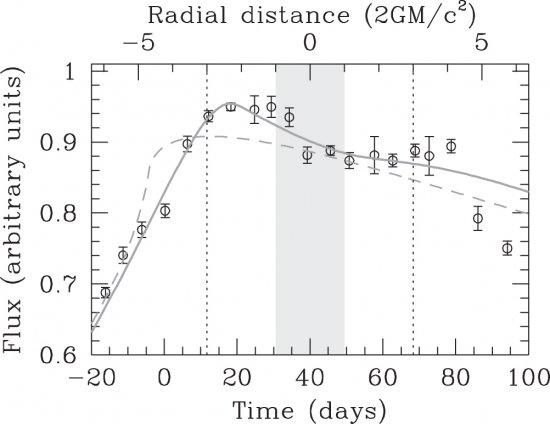La frontera de un agujero negro es el horizonte de sucesos del que nada puede escapar. Se espera que en su entorno se manifiesten efectos gravitatorios fuertes y fenómenos físicos exóticos. Los agujeros negros más masivos se encuentran en el centro de quásares muy distantes y no pueden ser resueltos con telescopios. Afortunadamente, en algunos quásares que están alineados con una galaxia intermedia, el efecto lente gravitatoria puede magnificar regiones diminutas dentro del quásar, permitiendo resolver estructuras de tamaño comparable al horizonte de sucesos. Hemos usado tres eventos de alta magnificación generados por el efecto microlente gravitatoria para "barrer" con altísima precisión espacial la fuente del quasar del sistema lente conocido como la "Cruz de Einstein". Hemos detectado una estructura afectada por efectos relativistas situada a tres radios del horizonte de eventos y que correspondería con el borde interno del disco de materia que orbita y cae sobre el horizonte del agujero negro. En el futuro, cuando estén disponibles los grandes programas de seguimiento (como el planeado para el Large Synoptic Survey Telescope) la posibilidad de detectar eventos de alta magnificación producidos por el efecto microlente podrá extenderse a miles de quásares (esto es, se detectarán cientos de eventos de alta magnificación) mejorando enormemente los estudios estadísticos y evolutivos (los quásares en sistemas lente conocidos tienen corrimientos al rojo o redshifts en el rango 0.5<z<5) del entorno de los agujeros negros supermasivos y de los discos de materia que los rodean.



